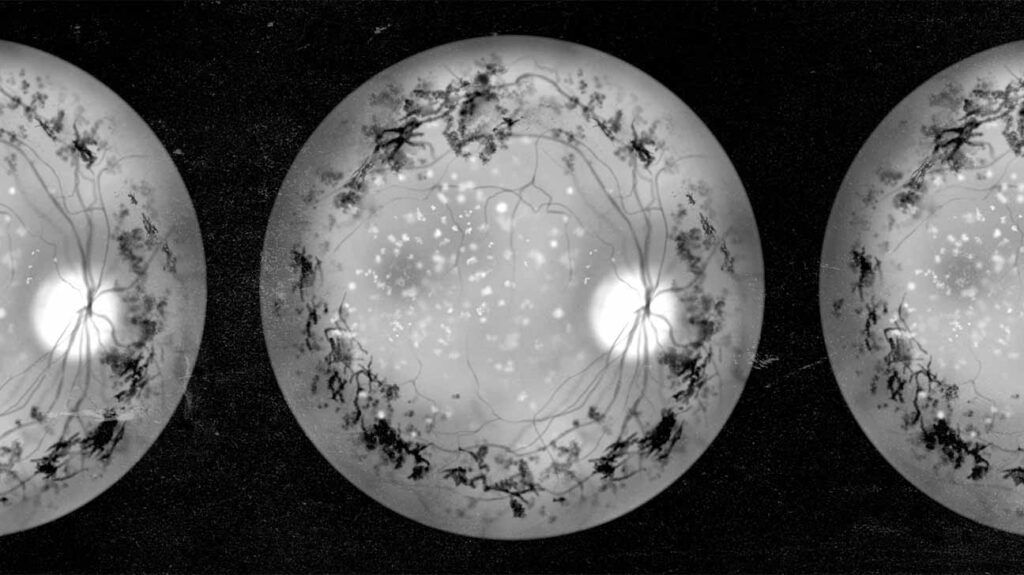Retinitis pigmentosa (RP) is an eye condition that can be genetic. In this way, people usually need to inherit two copies of a genetic variation that causes RP, one coming from each parent.
RP may also occur if only one parent passes on an RP gene, but this is less common. In
This article reviews RP inheritance, including the different genetic patterns and the risks of inheriting this condition.
A note about sex and gender
Sex and gender exist on spectrums. This article will use the terms “male,” “female,” or both to refer to sex assigned at birth. Click here to learn more.

Many genetic variations can lead to RP. People can inherit these variants from their parents in several ways:
Autosomal recessive
In autosomal recessive inheritance, a child must inherit two copies of the gene for RP — one from each parent — to develop the condition. This form of RP tends to cause symptoms
Autosomal dominant
In the autosomal dominant pattern, one copy of the gene for RP from just one parent is enough to cause RP in their offspring. This is less common and tends to cause symptoms that develop
X-linked recessive
This inheritance pattern relies on the X chromosome, which influences biological sex.
Females have two X chromosomes, one coming from each parent via their egg and sperm. Males have one X chromosome and one Y chromosome, with the Y coming from the male parent.
In this mode of inheritance, if the female parent carries the RP gene, their female children may inherit it but not experience symptoms. Their male children may develop RP.
If a male parent has RP on their X chromosome, their female children will carry the gene, but their male children will not be affected.
X-linked inheritance causes the
The most common mode of inheritance of RP is the autosomal recessive pattern, which is responsible for
The autosomal dominant inheritance pattern causes between 10–20% of cases of RP, while X-linked recessive inheritance causes 10%. The remaining 50% of cases have no family history or known cause.
Females can get RP but have a lower risk of developing it than males. This is because females cannot get X-linked recessive RP.
As females have two X chromosomes, they have two copies of it. If they inherit the RP gene on one of those chromosomes, it is not enough to develop RP.
Males only have one X chromosome, so if they inherit an X-linked genetic variation, they are more likely to develop the associated condition.
That said, there are several ways of inheriting RP, with X-linked recessive pattern being only one of them. Females can get RP via any of the other routes.
The probability of inheriting RP depends on the pattern of inheritance.
- Autosomal recessive pattern: Any child has a 25% risk of having RP and a 50% risk of inheriting the gene without developing the condition.
- Autosomal dominant pattern: Any children have a 50% risk of inheriting the disease.
- X-linked recessive pattern: If the female parent carries RP, any male children have a 50% risk of having RP, while female children have a 50% risk of inheriting the gene without any symptoms. If the male parent has RP, any female children will carry the gene, but males will not.
About 50% of RP cases occur in people who have no family history of the condition. However, this does not mean that RP is not something a person inherits.
Families can have the gene for RP for several generations without knowing. If people from two families carrying the gene have a baby, their child could have the condition.
Rarely, people
A person should contact a doctor if they suspect RP, whether or not they have a family history of the condition.
The symptoms of RP
- loss of night vision
- loss of side or peripheral vision
- sensitivity to bright light
- narrowing of the field vision
- loss of color vision
People should also speak with a doctor if they experience any vision changes, regardless of whether they match up with the symptoms of RP. Many conditions can cause vision loss, some of which can be serious, so it is important to ask a medical professional for advice.
There is no cure for RP, but there are treatment options to slow down the progression of symptoms.
People can inherit RP in several ways. The
Sometimes, a person can also develop RP if they only inherit one copy of a gene from one parent. It is also common for people to develop RP spontaneously without any family history of the condition.
People with any vision changes or other concerning symptoms should speak with a doctor.
